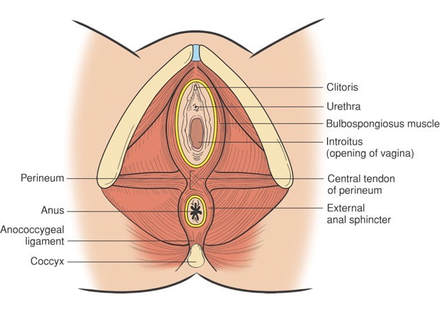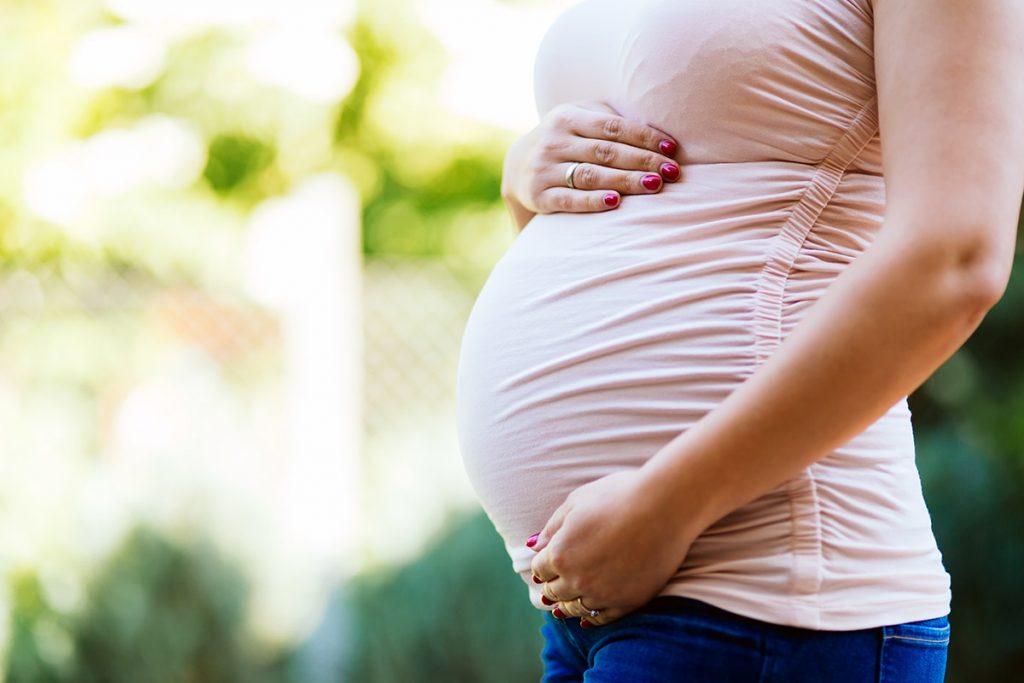What is perineal massage?
Perineal massage is a type of massage done to the muscles at the entrance to the vagina during the late stages of a pregnancy. It is done to try and prevent tears or the need for episiotomy during a vaginal delivery. The muscles at the entrance of the vagina are called the “superficial pelvic floor muscles” meaning that that are a little closer to the surface than the deeper pelvic floor. Just like anywhere else in the body, muscles tend to form layers, each muscle working closely with another muscle nearby, deeper or nearer the surface.
The superficial pelvic floor, works with the deeper pelvic floor when doing well known “pelvic floor exercises”. The superficial pelvic floor muscles extend from the area around the bladder outlet, the vagina and to the back passage. There are also bands of muscle that extend out towards the ischial tuberosities, commonly known as the “sit bones”. The following diagram shows you how these muscles look. These diagrams are always a bit challenging when you’re trying to work out what goes on inside the body!

Image via https://www.becomingafamilydoc.ca/blog/procedure-episiotomy-and-repair
Back in 2015, a review of the literature showed that it might help for women giving birth to their first child, but that it should only be done twice a week and from 36 weeks, in other words, during the last month of the pregnancy.
The findings were slightly positive and certainly there were no findings that perineal massage could cause any damage.
Just recently, a new Cochrane review has been published (2020), which identifies several more studies showing benefits of perineal massage. In other words, this study shows that women who do perineal massage, twice weekly from 36 weeks have less incidence of more severe perineal tears, less episiotomy and less pain.
So what does perineal massage consist of ?
Perineal massage consists of gentle massage to the lower half of the vaginal entrance, done twice weekly in the last 4 weeks of pregnancy. So if you think of the vaginal entrance like a circle, the upper half (or front half) is towards the clitoris and the lower half (or back half) is towards the back passage.
So with fingers or a thumb, gentle sweeping massage is carried out using either a vaginal lubricant or a natural oil, with olive oil being very acceptable to vaginal tissue.
It is acknowledged, that the sheer logistics of this are not easy when we think about the large belly in the way! But there are ways and means of getting to this area and maybe a partner might help if you really feel that you want to do this in your pregnancy.
It is something you can ask us about if coming to see us for pelvic floor exercise or prolapse prevention advice during pregnancy perhaps. It is perfectly reasonable to come in and ask for advice and guidance about any aspect of pelvic health and wellbeing during pregnancy.
Sometimes we just want to know that we are doing everything we can to optimise outcomes whilst being realistic that as much as we might prepare, every delivery is unique and different in its own way and some things are just out of our control. Sometimes larger tears happen and sometimes, episiotomies are still necessary however well we have prepared ourselves. If you have a third degree tear or a fourth degree tear or experience discomfort in the perineal area ongoing after the birth, come and see us for help!


